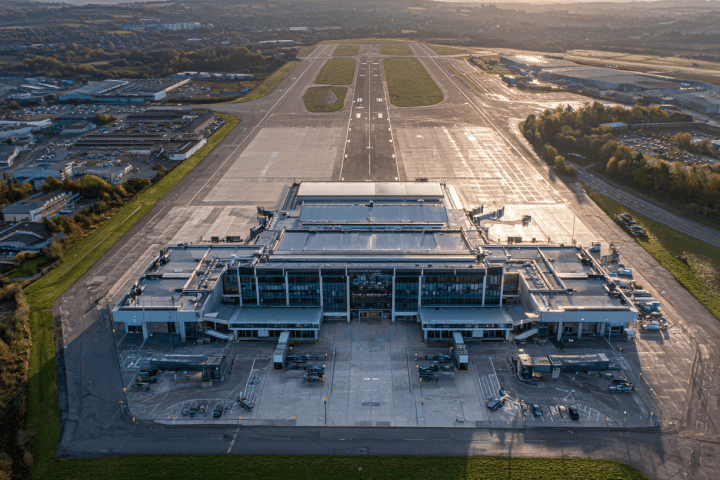The cyber threat landscape in 2025 has evolved into a complex battlefield where traditional cybercrime intersects with geopolitical warfare and emerging AI technologies. With cyber attacks increasing by 47% globally and ransomware attacks surging 126%, organizations face unprecedented challenges in protecting critical infrastructure while navigating the dangerous waters of AI-generated disinformation. From power grids under siege to deepfake-driven political manipulation, the stakes have never been higher.
The Critical Infrastructure Crisis
Record-Breaking Attack Surge
In Q1 2025 alone, cyber attacks per organization increased by 47%, reaching an average of 1,925 weekly attacks. This dramatic escalation represents more than just numbers—it signals a fundamental shift in how adversaries view and target the backbone of modern society.
Ransomware remains the top cybercrime threat facing Canada’s critical infrastructure, with ransomware directly disrupting critical infrastructure entities’ ability to deliver critical services. The same pattern is replicated globally, with attackers specifically targeting sectors that society depends on most.
Power Grids: The Ultimate Target
Energy infrastructure has become the crown jewel for cyber attackers in 2025. Modern technology relies heavily on substantial energy consumption, rendering power grids highly attractive targets for cybercriminals, with the global transition to renewable energy systems creating new vulnerabilities.
The interconnected nature of modern power systems creates cascading risks. When one component fails, the ripple effects can bring down entire regional grids. Experts predict this trend will only intensify in 2025, as adversaries become more sophisticated, using highly cunning, targeted methods to infiltrate networks and remain undetected for extended periods.
Nation-State Actors Leading the Charge
The most concerning development in 2025 is the increased involvement of state-sponsored groups. Volt Typhoon, a Chinese state-sponsored threat actor, aims to compromise critical infrastructure in the United States with geopolitical motivations. These groups operate with resources and patience that far exceed traditional cybercriminals.
In October 2024, Unit 42 identified the first observed instance of a North Korean state-sponsored threat group directly collaborating with a ransomware group, marking a new trend in the cybercriminal threat landscape. This convergence of state actors and criminal organizations creates hybrid threats that are exceptionally difficult to defend against.
Water Systems Under Siege
Water infrastructure has emerged as a particularly vulnerable target. Water is an attractive target for attackers seeking attention, such as when Iran-linked Cyber Av3ngers sent a message by compromising water utilities that used a particular Israel-made device. The psychological impact of water system attacks extends far beyond their technical consequences.
These attacks serve multiple purposes: disrupting essential services, creating public panic, and demonstrating capabilities. Targeting critical infrastructure could be intended to divert attention, with Russia-affiliated hackers potentially aiming to disrupt U.S. electric grids or water supply to redirect America’s focus away from Russia’s activities in Ukraine.
The Deepfake Political Revolution
AI’s Impact on Elections
While infrastructure attacks dominate headlines, a quieter revolution is unfolding in political manipulation through AI-generated content. The feared wave of deceptive, targeted deepfakes didn’t materialize in 2024 elections, but the most visible use of AI was to create memes and content whose artificial origins weren’t disguised.
However, the threat is far from over. AI technologies can influence political processes through disseminating false political information, creating fake narratives, images, videos, and voice clones to undermine opposition and manipulate public perception.
The Liar’s Dividend Phenomenon
One of the most insidious effects of deepfake technology isn’t the fake content itself, but how it undermines trust in authentic content. The “liar’s dividend” suggests that as the public becomes more aware that video and audio can be convincingly faked, some will try to escape accountability by denouncing authentic audio and video as deepfakes.
This creates a dangerous environment where the liar’s dividend becomes more powerful as people become more familiar with deepfakes, priming media consumers to dismiss legitimate campaign messaging.
Personalized Targeting: The Next Frontier
The real concern for 2025 isn’t mass-distributed deepfakes, but personalized targeting. We are quickly advancing towards real-time synthetic audio conversations, where AI systems can engage in personalized targeting during elections. This capability could enable micro-targeted disinformation campaigns tailored to individual voters’ psychological profiles.
The concern is not the big, bad deepfake at the top of the ticket, but misinformation in local elections where journalists are scarce and voters have less ability to verify information. Local elections become particularly vulnerable testing grounds for these new technologies.
The Convergence of Threats
AI-Enhanced Cyber Attacks
The intersection of AI and cybercrime is creating unprecedented challenges. Generative AI is emerging as a growing addition to the toolbox of nation-state-backed threat actors, cybercriminals, and hacktivists, especially for social engineering campaigns and high-tempo information operations.
By 2025, experts predict we’ll move past simple AI-driven threat detection into full-scale machine-versus-machine warfare, where AI systems engage in real-time combat with adversarial AI. This evolution requires security operations centers to become highly sophisticated platforms making complex tactical decisions at machine speed.
Ransomware Evolution
Ransomware attacks have become more sophisticated and targeted. Ransomware attacks rose by 126%, with North America accounting for 62% of global incidents, and Consumer Goods & Services being the most targeted sector. These aren’t random attacks but carefully orchestrated campaigns targeting specific vulnerabilities.
In the next two years, ransomware actors will almost certainly escalate their extortion tactics and refine their capabilities to increase pressure on victims to pay ransoms and evade law enforcement detection.
Emerging Threat Vectors
IoT and Cloud Vulnerabilities
The expansion of attack surfaces continues with increased IoT adoption and cloud migration. The skyrocketing adoption of IoT devices in critical infrastructure creates new opportunities for bad actors, as these devices often have security as an afterthought rather than built-in from the ground up.
Cloud environments present similar challenges. As more critical infrastructure moves to cloud environments, the risk of cyberattacks soars, shattering the traditional perimeter and opening up new vectors for potential breaches.
Supply Chain Compromise
Supply chain attacks have become a preferred method for sophisticated threat actors. The M&S cyberattack during Easter weekend 2025, attributed to Scattered Spider, shows how attackers bypass contractor defenses through social engineering, disabling operations for six weeks.
Regional and Sectoral Impact
Geographic Distribution
North America experienced 413 ransomware incidents in Q1 2025, representing approximately 58% of global ransomware activity, with manufacturing and transportation sectors being primary targets. This concentration reflects both the attractiveness of North American targets and their high dependency on digital infrastructure.
Sector-Specific Vulnerabilities
Different sectors face unique threat profiles. The education sector was hardest hit in Q1 2025, averaging 4,484 attacks per organization weekly—a 73% increase from the previous year, followed by government and telecommunications sectors.
Manufacturing organizations continued to experience significant impacts, with extortion affecting 29% and data theft 24% of incidents, as attackers exploit outdated legacy technology.
Defense Strategies and Recommendations
Infrastructure Protection
Organizations must implement multi-layered defense strategies:
- Network Segmentation: Isolate critical systems to limit attack spread and protect sensitive information
- Zero Trust Architecture: Implement strict identity verification for every person and device
- Regular Vulnerability Management: Patch vulnerabilities in publicly facing systems, as attackers often exploit unpatched systems for initial access
Combating Deepfakes
The fight against AI-generated disinformation requires technological and educational approaches:
- Blockchain Verification: Blockchain-based Deepfake Authenticity Verification Frameworks can detect and authenticate deepfake content in real time using blockchain transparency
- Media Literacy: Public education initiatives to help citizens identify and verify authentic content
- Platform Policies: Enhanced disclosure requirements for AI-generated content
Incident Response Preparation
Organizations must invest in more than technology—comprehensive Cyber Incident Response Plans backed by robust training and regular cyber tabletop exercises are business imperatives. The ability to respond quickly and effectively often determines whether an incident becomes a minor disruption or a catastrophic failure.
Looking Forward: The 2025 Threat Landscape
Emerging Challenges
Several trends will define the cyber threat landscape throughout 2025:
- Quantum Computing Threats: Trends in quantum computing implementation could render current encryption methods obsolete, leaving sensitive data vulnerable to decryption
- Machine-Speed Warfare: AI versus AI conflicts where human intervention becomes impossible
- Hybrid Warfare: Continued convergence of criminal and state-sponsored activities
Collaborative Defense
The scale and complexity of modern threats require unprecedented cooperation. Government initiatives like the White House’s Service for America program aim to address cybersecurity professional shortages through collaborative efforts between federal offices, state officials, and foreign nations.
Conclusion
The cyber threat landscape of 2025 represents a perfect storm of evolving attack methods, expanding attack surfaces, and increasingly sophisticated adversaries. From ransomware groups targeting critical infrastructure to AI-generated political manipulation, the threats we face are more diverse and dangerous than ever before.
Success in this environment requires more than traditional cybersecurity measures. Organizations must adopt holistic approaches that combine advanced technology, comprehensive training, and robust incident response capabilities. The stakes are too high for anything less than total commitment to cyber resilience.
The battle for digital security in 2025 isn’t just about protecting data or systems—it’s about preserving the foundations of modern society and democratic institutions. As attacks on infrastructure threaten physical safety and deepfakes undermine truth itself, our response must be equally comprehensive and determined.
The message is clear: in 2025, cybersecurity isn’t just an IT concern—it’s a matter of national security, economic stability, and democratic survival. Organizations that treat it as such will be best positioned to weather the storms ahead.












